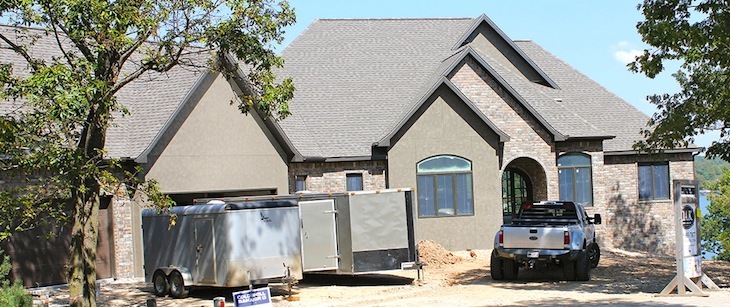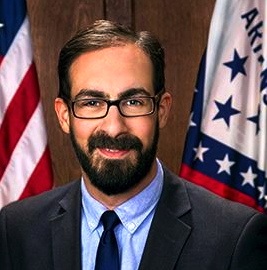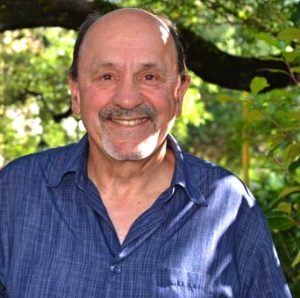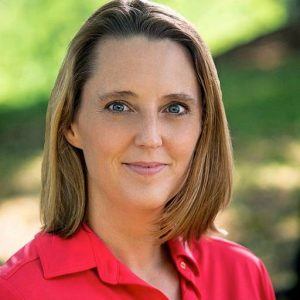Panelists say NWA’s housing issues require public-private coordination
by February 12, 2018 3:43 pm 1,192 views

Use of public land, zoning regulation changes and public-private partnerships are key in addressing current and future housing issues in Northwest Arkansas, according to speakers at the recent Housing NWA symposium, hosted by the University of Arkansas Fay Jones School of Architecture and Design in Fayetteville.
A panel discussion held Feb. 4 at Vol Walker Hall on the UA campus drew upon case studies in other states to look for potential solutions in the area.
Fayetteville Alderman Matthew Petty said the NWA housing market has a supply-and-demand problem. He cited a recent report titled “Measuring the Vitality of Downtowns in Bentonville, Fayetteville, Rogers, Siloam Springs and Springdale” that was conducted by the UA’s Center for Business & Economic Research and commissioned by the Walton Family Foundation of Bentonville. The study shows the region’s downtowns each added between a couple dozen and 200 units during the five-year period of the study.
“It would be convenient for us to look at this and look at the relevant housing prices and the rates of absorption – which have been really quick in all the downtowns – and conclude we are doing our job, that the downtowns are showing extraordinary vitality, and we’re responding to market conditions,” Petty said. “But, in fact, those properties are priced so high, the prices are escalating quickly, and those properties are closing so quickly because demand is not being met, because there is a mismatch. The numbers of units we produced in downtown the last five years are relatively rounding errors compared to the need we have in the region.”
The study shows very low multifamily vacancy rates and rising housing costs in each city.
Garner Stoll, director of development services for Fayetteville, said preventing displacement is a priority as prices increase. Through his previous work doing planning for Austin, Texas, he had a front-row seat to the problem. He’s served in his role in Fayetteville since this past August.
“Displacement is a real issue. It’s a big issue in Austin. I think it’ll be a big issue in Fayetteville, if it isn’t already,” he said.

With the potential for displacement on the horizon, residents are concerned, Petty said.
“As a politician, what I hear from my constituents is people have a fear they are going to be priced out of the neighborhoods they have lived in for decades and have come to love,” Petty said. “Those neighborhoods are a part of their identities and their identities are part of what makes the region what it is today and makes the region so attractive.”
MIDDLE HOUSING
One area that needs special attention now is housing for moderate-income individuals, “lowercase-A” affordable, as opposed to “uppercase-A” affordable, according to speakers at the symposium.
“I don’t mean to trivialize the need for uppercase-A affordable programs. The homeless population in the last 10 years more than doubled,” Petty said. “Many have been able to find shelter by doubling up with friends and family. People are making housing choices today they wouldn’t have 10 years ago.”
Lisa Sturtevant, senior visiting fellow for the Urban Land Institute and president of Lisa Sturtevant & Associates in Washington, D.C., said the biggest challenges in providing affordable housing is the gap between the cost of building housing and the revenue generated by that housing in terms of rental prices.
“The conditions of the housing market have a lot to do with that, and in a place like NWA, where there is significant population growth, and those new residents often have higher incomes, that gap is even harder to figure out how to close,” she said.
Cost factors include project scale, design and construction, finance and underwriting, program and investor requirements, and state and local regulations. A squeezed construction labor market has driven up costs, Petty said, and “middle housing” is often not served through standard financial products the same way large-scale developments and single-family homes are.
Solutions can be found, the panelists said, through changes local land use and zoning policies. Sturtevant cited mandatory inclusionary housing as a potential piece to the puzzle. It would require a share of new units in a neighborhood be affordable housing. Stoll said the region’s cities would do well “to find ways to allow a variety of housing types in all neighborhoods.” However, a provision that is closer in reach for now is to remove regulatory barriers for alternative housing types, including tiny homes. “This has been done to some extent, but there’s still a lot left to do,” he said.
AUSTIN AIRPORT PROJECT
Stoll worked in Austin at a time when the city faced similar issues as NWA tied to sustained, rapid growth, a resurgent downtown, increasing traffic congestion, low wages and a lack of housing. Austin also was faced with navigating the political context of a liberal-leaning town in a red state, he said.

One strategy the NWA region could borrow from Austin is to make public land available for housing, he said, pointing specifically to the city’s redevelopment of the former Robert Mueller Municipal Airport property into a mixed-use “urban village.” The public land doesn’t have to be vacant, Sturtevant added. She advocated for cities to “think about how we redevelop, fire stations, police stations, libraries and community centers and look for opportunities to introduce housing into those developments.”
She pointed to one example where housing was attached to a fire station and to examples where senior housing was integrated into public libraries. Senior housing, the panelists agreed, is another priority issue as NWA’s population ages.
“There’s no reason for us to be surprised about the needs for housing older adults. We are getting older every day,” Sturtevant said. “What are we doing to plan for what we know will be coming in terms of growth in housing needs for seniors?”
Cities should create policies that promote and “maybe even incentivize” accessibility, Sturtevant said, allowing aging in place. Stoll said smaller retirement communities could be beneficial.
“NWA, as near as I can tell, is all about active living. Seniors want to remain active. There are huge possibilities for taking these cruise ship-type assisted living centers and breaking them up into finer-grained communities. … I see a continuum shift for the region to offer more active living for seniors, rather than warehousing them.”
NOT ONE-SIZE-FITS-ALL
Sturtevant pointed to land trusts as a potential tool for communities to build affordable housing, and – while stressing the importance of NWA’s uniqueness and how housing is never a one-size-fits-all issue – she also highlighted case studies from the eastern U.S. as examples to look to for inspiration.

Examples include employer-assisting housing projects, especially with state universities, and a project that was the result of a partnership between a local housing authority and a for-profit developer, where affordable housing was built alongside a community center. The partnership showed how in-kind subsidies can be as useful if not more than financial resources, Sturtevant said. For example, the housing and the community center shared a parking structure, and the housing residents could use the center.
“I can’t overstate the value of having the community center next to this housing so that the residents can take advantage of the community center and the programming,” she said.
Former U.S. Secretary of Housing and Development Shaun Donovan also stressed the importance of strong partnerships among the public and private sectors, including philanthropic groups during his Housing NWA symposium speech Feb. 3 at The Record in downtown Bentonville. He also recommended communities “figure out how to leverage the very success that is creating pressure in order to create the resources to solve the problem.”
PUBLIC-PRIVATE EFFORTS
“In every region where there has been positive movement on these issues, you have strong philanthropy,” Donovan said, specifying the Walton Foundation as an example for NWA. The foundation helped fund the symposium with a $250,000 grant. “The Walton Family Foundation can act as a risk capital investor in ideas where the public sector may not be willing to or need a little kick to get engaged in.”
By the same token, another speaker Feb. 3 at The Record, New York City-based Ford Foundation President Darren Walker, advocated for the importance of the public sector.
“Philanthropy cannot do the job of government. Not only can we not do it, no one elected us, and we don’t have the resources,” Walker said. “Do all you can to elect great leaders, to nourish and nurture those leaders in your communities and help them step forward and be courageous, because it takes courage to do this.”
This type of movement needs a leader, Donovan said, to convene an area’s assets and start the process.
“It takes either a very unusual strong leader in a public official, or it can be an institution like a university or a foundation, that becomes the convening table.”
Donovan said he’s seen small- and medium-sized housing authorities have great impact in building “integrated communities, not just for the lowest income but for mixed income in a way that is quite powerful,” he said. He also encouraged communities to get creative and think strategically about “strange bedfellow issues.”
In Fresno – “one of the poorest cities in the country right next to some of the most fertile agricultural area in the U.S.” – an innovative mayor saw an alignment of interests between the city’s downtown business centers and area farms and used it as a starting point to help form an alliance between the two interests, he said. The groups collectively helped develop a plan to build up density in downtown as a means to protecting farmland.
“The key is getting everyone to the table and making sure they have a voice and can see themselves in the solution that we come up with,” Donovan said.
